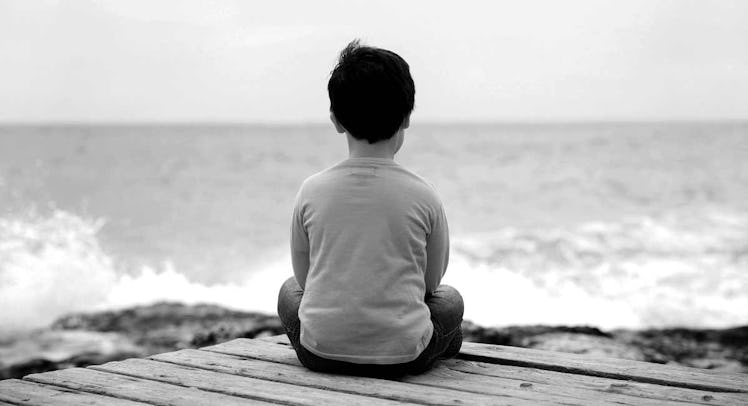Study Shows What Happens To Kids Whose Mothers Are Murdered By Fathers
Nearly half of murdered women are killed by their husbands. This is what happens to their kids.

Nearly half of murdered women worldwide were killed by their husbands and a recent study is the first to look at what happens to their children. Research shows that many victims of intimate partner murders are parents as well, but given the sensitive nature of the subject, little is known about what happens to the kids that survive them. Now, a new review of literature on the topic has synthesized the results of the 13 relevant studies ever conducted, eight of which were case studies. The findings? Unsurprisingly, the trauma of homicide in causes PTSD and a slew of related problems including, but not limited to intrusive memories, anxiety, sleep disturbances, aggressive and self-destructive behavior, hyperactivity, and concentration problems. The research, published in PLOS ONE, reveals that a majority of these kids were victims of abuse themselves and often in the same building as their parents at the time of the killing.
Results indicated that children were around 7-years-old on average at the time of the murder, and about two-thirds were younger than 10-years-old overall. While 83 percent of children were either exposed to neglect of violence themselves before their parent was killed, 43 percent had not received any type of social services or mental health care interventions prior to homicides, and for an additional 16 percent, their access to help was unclear. For 80 percent of kids, the murders took place in their home, and in 43 percent of the families at least one child witnessed the murder or crime scene.
“We had seen quite a few children bereaved by homicide in our clinical services and that started to generate questions,” study coauthor Eva Alisic, a trauma psychologist research fellow at Monash University, told Fatherly. “We know especially little about those children that are not seen by mental health care services.”
To bring together the little extant research available, Alisic and her colleagues cross-examined eight national databases in the Netherlands, such as databases of the Child Care and Protection Board, the client database of the National Psychotrauma Centre at the Wilhelmina Children’s Hospital, and databases of the Department of Justice, and found 256 children in who lost a parent to intimate partner homicide between 2003 and 2012.
About half of the children Alisic looked at lost their parent by a knife or some sort of cutting weapon, whereas and guns were the second most prevalent weapon used. For about 10 percent of children, the perpetrator committed suicide within 24 hours of the crime. Although the study included children whose biological mothers were murdered by romantic partners who were not their fathers, data confirms that a majority of children were living with both biological parents at the time, suggesting that this was their father.
Being the first study to attempt to use robust population-based data on children who lost a parent to intimate partner homicide, the study comes with limitations. In order to parse together spotty data, researchers had to reach out to families fill in gaps, which could come with biases from self-reporting. It’s important to note that the sample was solely from a small and relatively affluent country, and though it’s difficult to generalize without studying this, “I would expect an even larger burden on US children than on Dutch children,” Alisic says. She recommends future studies look at broader international samples, follow subjects long-term, and talk to children in these situations directly to figure out the most effective way for them to cope.
“We know that chaos and lying to children about what happened and where their parents are make a horrible situation even worse,” Alisic adds. “So everything we can do to provide them a safe and caring environment in these difficult times is helpful. Giving children control and a say is important.”
This article was originally published on